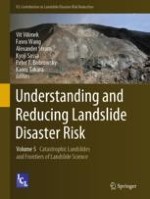2021 | OriginalPaper | Chapter
Investigation of 20 August 2019 Catastrophic Debris Flows Triggered by Extreme Rainstorms Near Epicentre of Wenchuan Earthquake
Authors : Dalei Peng, Limin Zhang, Hofai Wong, Ruilin Fan, Shuai Zhang
Published in: Understanding and Reducing Landslide Disaster Risk
Publisher: Springer International Publishing
Activate our intelligent search to find suitable subject content or patents.
Select sections of text to find matching patents with Artificial Intelligence. powered by
Select sections of text to find additional relevant content using AI-assisted search. powered by
